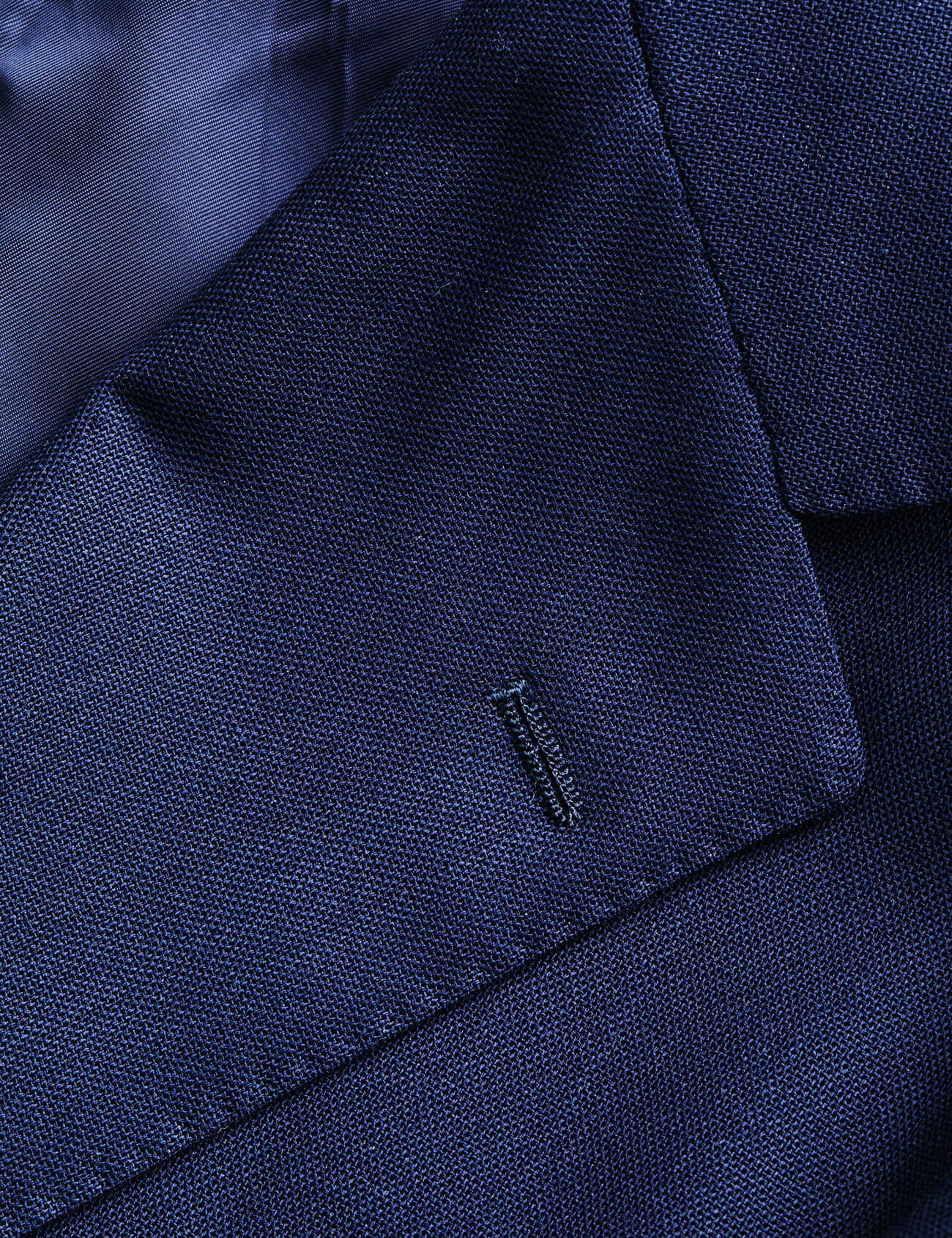Welcome to Further Details, a series dedicated to ubiquitous but overlooked elements hidden on your favorite products. This week: the buttonhole near the notch of your blazer’s lapel.
As you suit up, for work or perhaps a summer wedding, you might notice a small detail as you button up your jacket — a rogue buttonhole near the notch of the lapel. It’s definitely there, even if it is sewn shut with no discernible way to open it without ruining your only good suit. You look to the other lapel, but it’s completely smooth, void of any clues.
Essential Styles
• The 10 Best Suits Under $1,000
However, a suit jacket isn’t the only place you’ll find an unpartnered buttonhole. You can find this lonesome detail on pea coats, military shirts, camp shirts, hunting jackets and more. To trace the origin of the lapel’s buttonhole, you’ll have to go back to the beginning of lapels themselves.

The earliest lapels were first seen in the 1800s, during the Victorian Era. Prior to this, men wore frocks with high collars, buttoned all the way to the top. When the weather would get too hot, men would relax their button stance, turning down their collars and leaving the top button undone. Not only would this provide some respite from the swelter, but it would also result in symmetrical folded-over flaps at the chest which would evolve to become what we recognize today as a lapel. In fact, the word ‘lapel’ is derived from the Old English laeppa, meaning ‘flap of cloth’ or ‘piece of cloth’.
Indeed, the lapel was originally meant to be buttoned to the top. This explains why you can only see the buttonhole since the button would instead be on the underside of the opposing flap, once the lapel was flipped open.

Oscar Wilde wearing a frock adorned with flowers at the lapel, circa 1891.
As the lapel was spawned and then evolved, the buttonhole and its accompanying button became vestigial, though not altogether inutile at first. The buttonhole still proved itself to be useful. Stories of Prince Albert tell of him using it to hold flowers, a practice which is still alive today, though more often in formal occasions. From there, the buttonhole evolved again and now, some suitmakers even sew a loop on the underside of the buttonhole to hold your boutonniere in place. But for everyday wear, the decorative flair is mostly relegated to lapel pins, if used at all.
While the buttonhole still remains, its button has all but fallen off. Some suitmakers still include the vestigial button and if they don’t it’s easy enough to sew a button onto the other lapel if you’re into its history. For the rest of us, it’s at least one more mystery solved.


